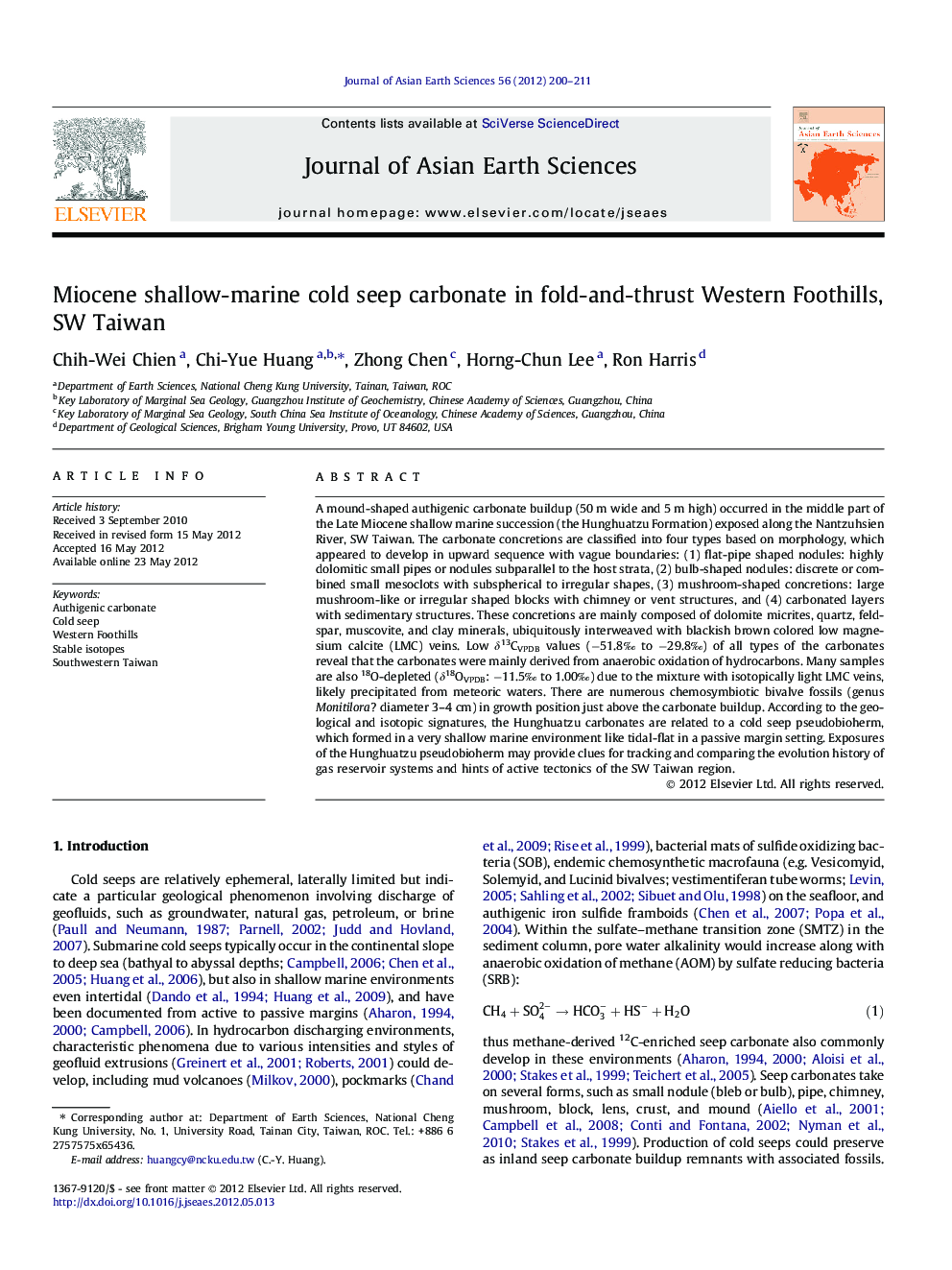| کد مقاله | کد نشریه | سال انتشار | مقاله انگلیسی | نسخه تمام متن |
|---|---|---|---|---|
| 4731338 | 1640409 | 2012 | 12 صفحه PDF | دانلود رایگان |

A mound-shaped authigenic carbonate buildup (50 m wide and 5 m high) occurred in the middle part of the Late Miocene shallow marine succession (the Hunghuatzu Formation) exposed along the Nantzuhsien River, SW Taiwan. The carbonate concretions are classified into four types based on morphology, which appeared to develop in upward sequence with vague boundaries: (1) flat-pipe shaped nodules: highly dolomitic small pipes or nodules subparallel to the host strata, (2) bulb-shaped nodules: discrete or combined small mesoclots with subspherical to irregular shapes, (3) mushroom-shaped concretions: large mushroom-like or irregular shaped blocks with chimney or vent structures, and (4) carbonated layers with sedimentary structures. These concretions are mainly composed of dolomite micrites, quartz, feldspar, muscovite, and clay minerals, ubiquitously interweaved with blackish brown colored low magnesium calcite (LMC) veins. Low δ13CVPDB values (−51.8‰ to −29.8‰) of all types of the carbonates reveal that the carbonates were mainly derived from anaerobic oxidation of hydrocarbons. Many samples are also 18O-depleted (δ18OVPDB: −11.5‰ to 1.00‰) due to the mixture with isotopically light LMC veins, likely precipitated from meteoric waters. There are numerous chemosymbiotic bivalve fossils (genus Monitilora? diameter 3–4 cm) in growth position just above the carbonate buildup. According to the geological and isotopic signatures, the Hunghuatzu carbonates are related to a cold seep pseudobioherm, which formed in a very shallow marine environment like tidal-flat in a passive margin setting. Exposures of the Hunghuatzu pseudobioherm may provide clues for tracking and comparing the evolution history of gas reservoir systems and hints of active tectonics of the SW Taiwan region.
► A Late Miocene mound-shaped cold seep carbonate occurs in passive margin sequences in southwestern Taiwan.
► Abundant in situ lucinid fossils with low diversity seat on the top of the seep carbonate buildup.
► Stable carbon isotope analyses reveal that the carbonate is mainly derived from anaerobic oxidation of hydrocarbons.
► Low oxygen isotopic values indicate that the carbonate is contaminated by interweaving low magnesium calcite veins.
► The seep carbonate formed in shallow marine setting and is related to fault systems.
Journal: Journal of Asian Earth Sciences - Volume 56, 29 August 2012, Pages 200–211